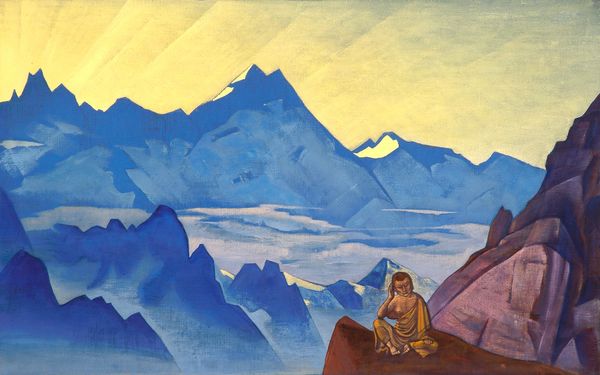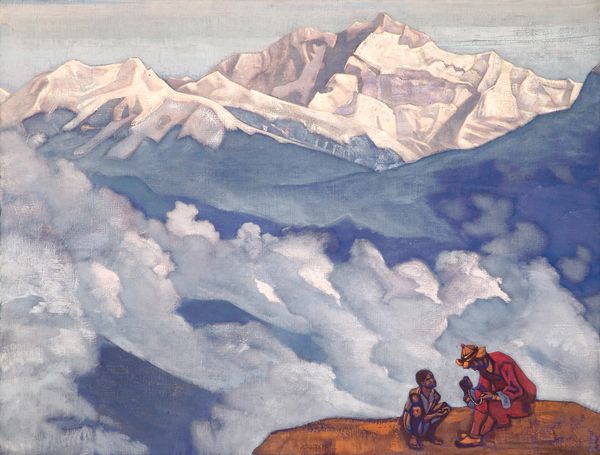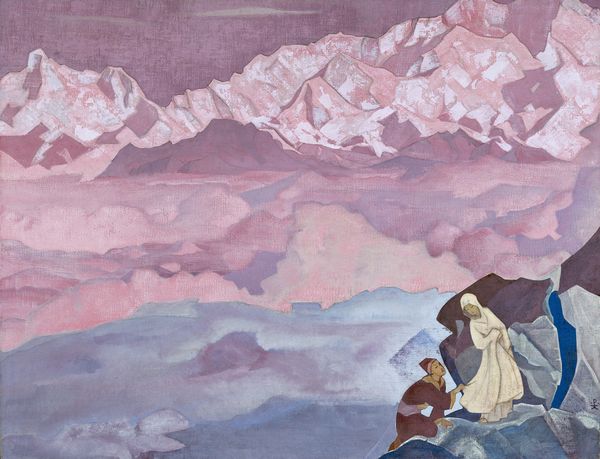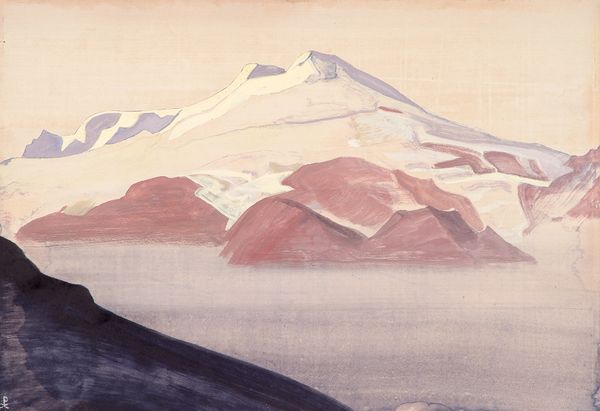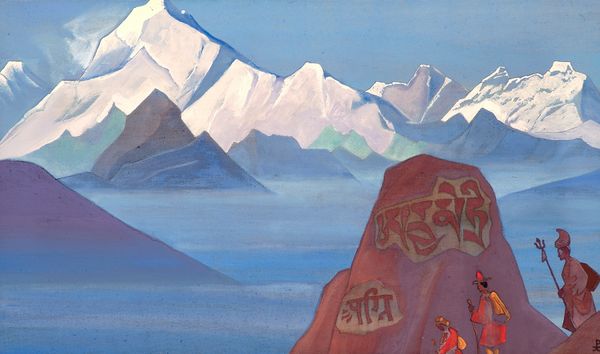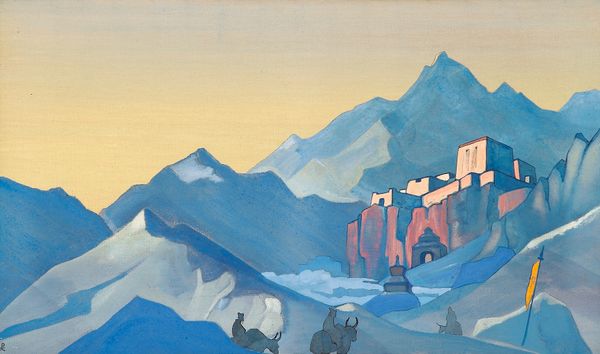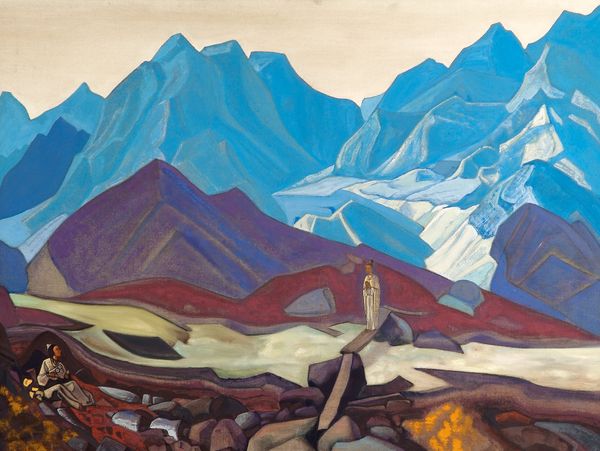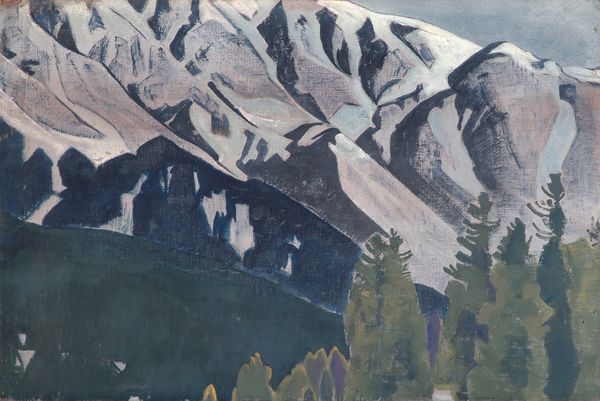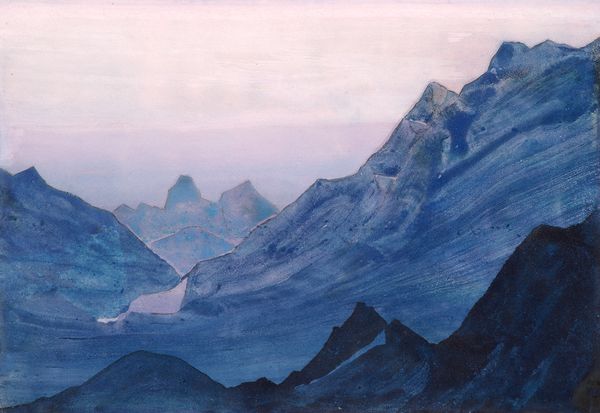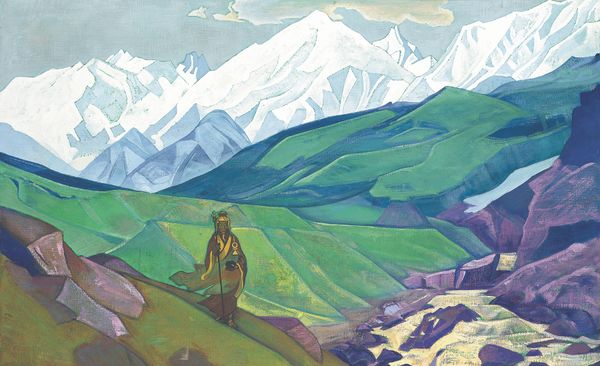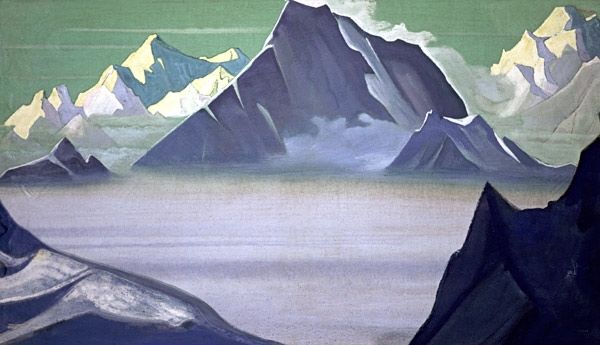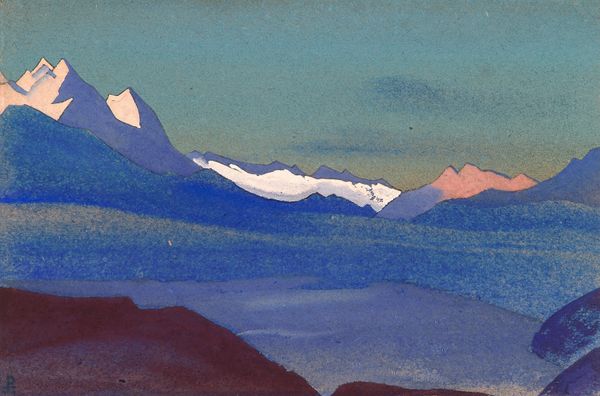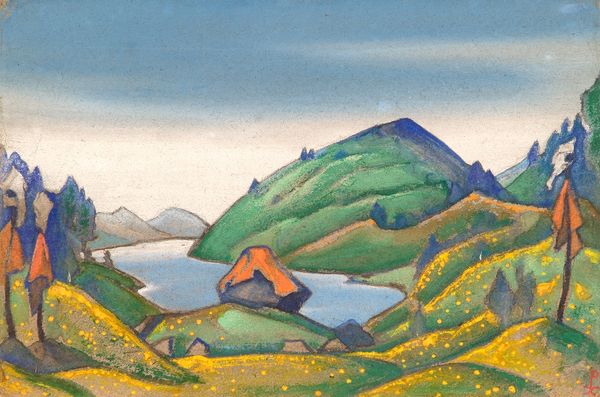
Dimensions: 74 x 117.5 cm
Copyright: Public domain
Curator: Looking at "Drops of Life," a 1924 tempera painting by Nicholas Roerich, one is immediately struck by its dreamlike, ethereal quality. What’s your take? Editor: Immediately, the material application stands out to me. The layers of tempera create a uniquely matte and textured surface, perfectly suited for Roerich's mountain landscapes. It feels grounded in the tangible process of its making. Curator: Indeed. Tempera provides a certain luminosity, doesn’t it? And Roerich's artistic endeavors are deeply interwoven with his spiritual pursuits, influenced by theosophy and a search for universal wisdom. This piece uses symbols to evoke profound spiritual ideas. We can see Roerich reflecting Eastern thought. Note the woman. What does she represent to you? Editor: I am particularly drawn to the earthy tones of the pots and her garments contrasting with the landscape; it feels symbolic of how material culture can both enhance and become subsumed within a powerful nature. In a way, it seems to interrogate how human labor is shaped by the land and also shapes our perception of the world around us. Curator: Interesting point. For me, I can't help but see the juxtaposition of the vast mountainous landscape and the solitary figure. Considering his deep interest in Eastern philosophies, particularly Buddhism, could the woman in yellow symbolize enlightenment found through connection with the natural world? Could the jugs symbolize the vessels which contain life itself? It highlights a sort of unity with the spiritual. Editor: Possibly. But how is Roerich actually depicting this? Notice that there is a literal thinness of paint that blurs the boundaries of the rock, of her garments and the jugs— it seems intentional— a comment of sorts. And look how all of that careful layering draws the eye. I wouldn't discard those practical elements out of hand, either! Curator: Perhaps the way Roerich blurs lines, visually and conceptually, echoes his cross-cultural engagement with Eastern and Western thought, but ultimately asks us to ponder our own role in the making of meaning. Editor: Precisely. In exploring the physical process, the layers and material qualities, we can enrich our understanding of this captivating piece.
Comments
No comments
Be the first to comment and join the conversation on the ultimate creative platform.
